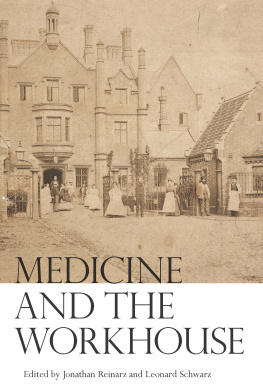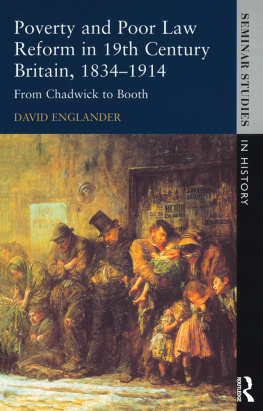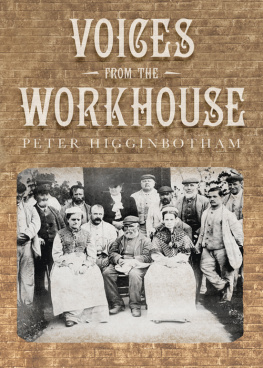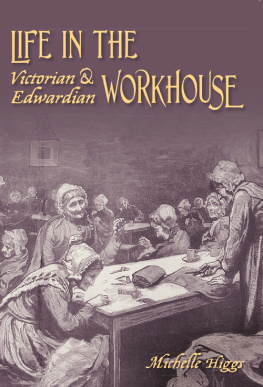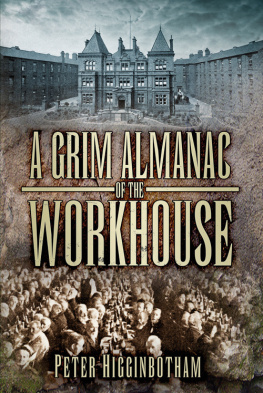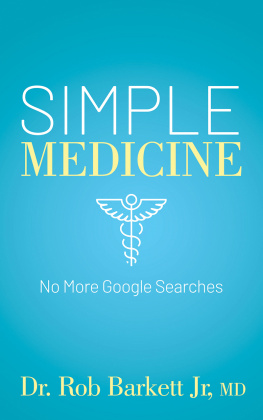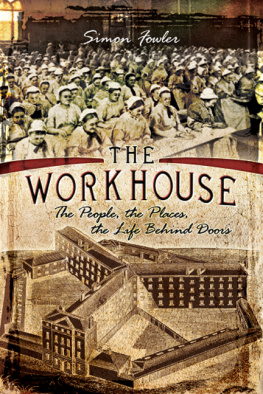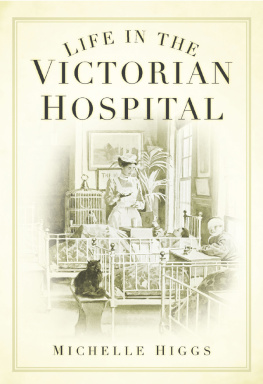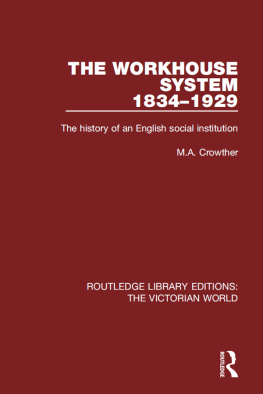Medicine and the Workhouse
Throughout the eighteenth and nineteenth centuries workhouses were a key provider of medical care to the poor. Workhouse beds in Britain far outnumbered beds provided by charitable hospitals, and a high percentage of inmates were elderly and infirm, needing not only accommodation and work but also medical relief.
Historians of welfare, the English poor laws, and medicine have been aware of the importance of workhouse-based medicine, but the topic has not been studied in depth. This volume is the first to examine the history of the medical services provided by these institutions both in Britain and its former colonies, over the period covered by the Old and New Poor Laws. Written by prominent historians of medicine, welfare, and social policy, the essays document the experiences of those who received care or died in these houses, and form the critical foundation for a new historiography of workhouse medicine.
This long overdue volume of essays moves beyond accounts of exclusively metropolitan experiences, drawing attention to the diverse experiences and policies that shaped medical relief at the regional or local levels and showing how, in words of one contributor, the workhouses were reluctant saviors at best. The volume offers a coherent, up-to-date edited collection that will inform further research and appeal to a large audience of medical and welfare historians. Keir Waddington, Cardiff University, School of History, Archeology, and Religion.
Rochester Studies in Medical History
Senior Editor: Theodore M. Brown
Professor of History and Preventive Medicine
University of Rochester
ISSN 1526-2715
Additional Titles of Interest
John W. Thompson: Psychiatrist in the Shadow of the Holocaust
Paul J. Weindling
The Origins of Organ Transplantation:
Surgery and Laboratory Science, 1880 1930
Thomas Schlich
Communities and Health Care: The Rochester, New York, Experiment
Sarah F. Liebschutz
The Neurological Patient in History
Edited by L. Stephen Jacyna and Stephen T. Casper
The Birth Control Clinic in a Marketplace World
Rose Holz
Bacteriology in British India: Laboratory Medicine and the Tropics
Pratik Chakrabarti
Barefoot Doctors and Western Medicine in China
Xiaoping Fang
Beriberi in Modern Japan: The Making of a National Disease
Alexander R. Bay
The Lobotomy Letters
Mical Raz
Plague and Public Health in Early Modern Seville
Kristy Wilson Bowers
A complete list of titles in the Rochester Studies in Medical History series may be found on our website, www.urpress.com .
Contents
Jonathan Reinarz and Leonard Schwarz
Kevin Siena
Susannah Ottaway
Jeremy Boulton, Romola Davenport, and Leonard Schwarz
Alannah Tomkins
Leonard Smith
Virginia Crossman
Jonathan Reinarz and Alistair Ritch
Samantha Shave
Angela Negrine
Rita Pemberton
Steven King
Preface
This book had its origins in a two-day conference on Medicine and the Workhouse in November 2008, sponsored by the University of Birmingham and the Wellcome Trust. It drew together scholars whose current work directly addresses the issue of medicine and the workhouse. It also included a number of historians who have investigated the subject of health, illness, and the workhouse and whose names frequently appear in the references of the selection of papers that were chosen to present in this volume. The first day of the event was devoted to the Old Poor Law, while the papers presented on the second day concentrated on the New Poor Law. This structure was retained for the organization of this volume to demonstrate change and particular themes that emerged during the conference. The afterword was initially a keynote delivered at the outset of the event but has been situated at the end of the volume, given that it serves as a bridge between the two periods and offers a fitting conclusion to the subject as a whole, outlining both achievements in this area of research and some future challenges.
We wish to thank the conference sponsors, particularly the Wellcome Trust, for making this event possible and all the presenters for their stimulating papers and discussions. We are especially grateful to Steven King, Alistair Ritch, and Kevin Siena for reading through the introductory section of the volume and their many helpful comments. We also wish to thank Kiran Hallan for assisting with the organization of the event and Frances Worrall for aiding with the footnotes and tables.
The Editors
Introduction
J ONATHAN R EINARZ AND L EONARD S CHWARZ
Despite a relative dearth of work on the subject, the student of workhouses is bound, within a short space of time, to be led into the field of medicine. They also offer concentrations of particular cases, as illustrated in a number of the chapters in this volume, encouraging what at times might be described as an early period of specialization at some institutions. Nevertheless, few medical practitioners, let alone inmates, were eager to enter workhouses, usually spending short periods there before securing more prestigious posts at voluntary and endowed hospitals. As late as the second half of the twentieth century, medical schools in England continued to refuse to recognize the sheer variety of medical conditions in a workhouse, as the chapter by Jonathan Reinarz and Alistair Ritch in this volume makes clear. Within the voluminous medical history literature for England, these institutions have been equally sidelined.
The historian of workhouses is confronted with many potential themes for research, nearly as diverse and numerous as the cases that presented themselves to medical staff in these institutions in the past. As a result, it is a rich seam for future historical research. If not immediately evident in subsequent chapters, many of these strands are clearly outlined in Steven Kings afterword. The scope of this volume was, however, restricted by the papers that were presented at an original conference and, of these, the editors have decided to concentrate on a handful that dominated discussion over the two-day event and recurred in papers across periods. The papers chosen for this volume, as the title declares, all very clearly focus on medical aspects of workhouse care. They also concentrate on both medical staff, primarily doctors and surgeons, less often the nursing staff, as well as the sick inmates. In terms of the medical staff, some effort has been made to trace a selection of medical careers and medical activity in the workhouse in greater detail than has been the case previously; relations between medical staff and lay governors and authorities are also explored, as are the roles of both groups as advocates, and opponents, of change. In the process, there is an attempt to chart the gradual professionalization of workhouse medical officers as a group. Often, these arguments are made by way of case studies. Among other matters, these regional studies are meant to reflect workhouse medicines profound geographic diversity, between metropolis and province, as well as colony, but also between relatively proximate provincial towns. Together, they demonstrate the variety of practice encompassed by workhouse medicine, as well as some very real challenges of research in this area.
Some subjects are noticeably absent. The chapters do not, for example, consider in any depth the history of workhouse architecture, which clearly impacted on the types of patients seen at institutions and determined their experiences at the workhouse, as this has been attempted elsewhere. Also, they consider workhouse patients. Most authors have attempted to break down the sick workhouse population in the traditional way, namely by classifying them into identifiable types, including young women, syphilitics and other venereal cases, patients suffering from fevers, the very young and older inmates. While some offer only rare snapshots of the sick poor in a particular year or region, as in Alannah Tomkinss contribution, others, such as Susannah Ottaway, map distinct groups, like the elderly, and make a case for gradual change in their representation and care over several decades. In general, the organization of the volume in two parts encourages these and other reflections, but comparisons often extend beyond the Old and New Poor Laws. Occasionally, comparisons may appear problematic, as they did when draft papers were first presented at our conference, and, at these points, authors focus instead on the methodological and practical issues that will challenge and frustrate future scholars who engage with the records of workhouses, their infirmaries, and the medical staff and patients who spent time there. As other biographies of workhouse inmates emerge, scholars will undoubtedly grapple with issues raised by Tomkins; for example, even the most depressing of workhouse cases appear to have had some kind words for the treatment they received in poor law establishments.

